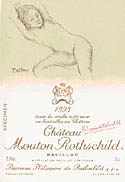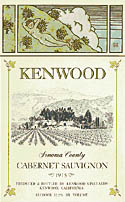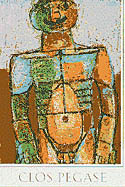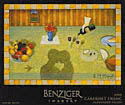Gates?
 New York City is all abuzz about “The Gates”. For those of you who haven’t heard about it (I was away when it opened and didn’t know about it until a few days after returning), it is an “art” installation in Central Park. I place the word art in quotes because it is called as such by the artists, though I can find little to fit the description. If you can, imagine a large number (to paraphrase the Hitchhiker’s Guide to the Galaxy… a really, really, really large number) of roughly 20 foot high steel frames with shower curtains hanging from them (okay, actually there are 7,500 of them). Lining 23 miles worth of walkways in the park. Flapping in the breeze. Oh, did I mention they’re the color of a an orange prison uniform? (The artists refer to the color of saffron, but I’d throw out any saffron of that color.)
New York City is all abuzz about “The Gates”. For those of you who haven’t heard about it (I was away when it opened and didn’t know about it until a few days after returning), it is an “art” installation in Central Park. I place the word art in quotes because it is called as such by the artists, though I can find little to fit the description. If you can, imagine a large number (to paraphrase the Hitchhiker’s Guide to the Galaxy… a really, really, really large number) of roughly 20 foot high steel frames with shower curtains hanging from them (okay, actually there are 7,500 of them). Lining 23 miles worth of walkways in the park. Flapping in the breeze. Oh, did I mention they’re the color of a an orange prison uniform? (The artists refer to the color of saffron, but I’d throw out any saffron of that color.)
 I spent an hour or so wandering amidst this unfortunate use of materials (10.5 million pounds of steel, 60 miles of vinyl tubing, 1 million square feet of nylon fabric, plus all the associated nuts, bolts, etc., to hold it all together). The park was thronged with folks there to gawk, to marvel, to critique. One friend of mine said he got a visceral thrill from it. A woman I passed wondered what was to be done with all the steel and plastic after the installation ends (I do too… what does one do with more than 5000 tons of bright orange steel and several thousand bright orange shower curtains?). Don’t forget about the 1 millions swatches of specially made nylon fabric that the artists had commissioned to be given away on a first-come, first-served basis to visitors… figure most of those will end up in the landfill after a few years… months… weeks… days… In an op-ed by Ted Caplow, an environmental engineer, in the New York Times, he mused:
I spent an hour or so wandering amidst this unfortunate use of materials (10.5 million pounds of steel, 60 miles of vinyl tubing, 1 million square feet of nylon fabric, plus all the associated nuts, bolts, etc., to hold it all together). The park was thronged with folks there to gawk, to marvel, to critique. One friend of mine said he got a visceral thrill from it. A woman I passed wondered what was to be done with all the steel and plastic after the installation ends (I do too… what does one do with more than 5000 tons of bright orange steel and several thousand bright orange shower curtains?). Don’t forget about the 1 millions swatches of specially made nylon fabric that the artists had commissioned to be given away on a first-come, first-served basis to visitors… figure most of those will end up in the landfill after a few years… months… weeks… days… In an op-ed by Ted Caplow, an environmental engineer, in the New York Times, he mused:
According to the United States Department of Energy, the steel industry in this country consumes about 18 million B.T.U.’s of raw energy to produce one ton of steel. If the cast steel in “The Gates” is typical American steel, then making it has required 97 billion B.T.U.’s, an amount equivalent to the entire annual energy consumption – including that used to run cars, furnaces, air conditioners and home appliances – of nearly 500 New York state residents.
Energy for the steel industry is supplied in roughly equal thirds by coal, natural gas and electricity from the grid. Based on generally accepted rates of carbon dioxide emissions for these three sources, it appears that making steel for “The Gates” churned out 7,000 tons of carbon dioxide, equivalent to the combined output of about 1,600 average American cars for a year (carbon dioxide is viewed by most scientists as a threat to the global climate system). We would have to plant more than 200 acres of trees and grow them for 10 years to remove this carbon dioxide from the atmosphere. Central Park has an area of about 800 acres, but only part of this has trees; and the mature trees that dominate the park do not absorb carbon dioxide effectively, so we cannot look to the park to clean up the mess.
In terms of sheer mass, the amount of plastic in “The Gates” is dwarfed by the steel, but emissions of carbon dioxide, dioxins and other toxins from plastics manufacturing are also a concern. The plastic chosen for the supports, polyvinyl chloride, or P.V.C., is an increasingly controversial material that releases dioxins and other carcinogens to the air and water during manufacture (and possibly afterward). Polyvinyl chloride has been singled out as “the poison plastic” by Greenpeace and other environmental groups. We now have 60 miles of it in the park. Clearly, the squirrels were not consulted on this choice.
Is it art? Who knows. I could almost see that if viewed from the air I could, perhaps, find something artistic about it (see picture below). From the ground it was little more than an interesting feat of very basic engineering – interesting for its scope rather than its content.
The artists, Christo and Jeanne-Claude, have stated that it was all paid for by themselves and took them 26 years to create. Perhaps, perhaps not. The city seems to feel that it is bringing in a burst of needed revenue. Most likely true… on this last Sunday, a week after the installation, there still must have been several tens of thousands of tourists there to see it. It certainly is a revenue builder for some folks. Why wasn’t I the one to think of buying up yards of orange nylon (in varying shades, none of which matched the installation) and selling square yards of it for $20 a pop as one enterprising young man was doing? I didn’t come up with the orange ponchos (well, really more of pieces of nylon with a string tying two corners together… very cape-like) for $25 each either. Nor the t-shirts, nor sweatshirts, nor the orange soda sales.
Thankfully, there are those out there with a good perspective on it… I refer you to The Somerville Gates…
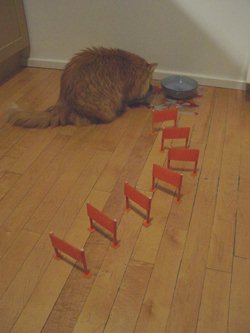
..or perhaps to The Crackers, far more intriguing to my mind.
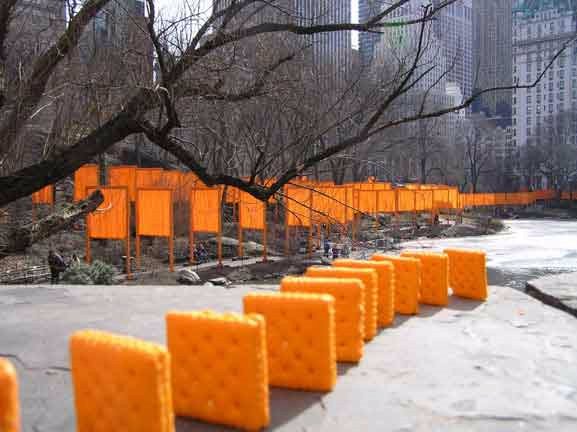
I leave you with an excerpt from New York Magazine:
“Nobody speaks to Christo!” says his wife and collaborator, Jeanne-Claude, in her dramatic Parisian accent. “Christo is working seventeen hours a day on the drawings we must sell to pay for The Gates. Without these sketches, there will be no Gates!”
So every morning Christo climbs the stairs from the couple’s fourth-floor apartment to his fifth-floor studio. He works, standing, for several hours on wall-size drawings that illustrate the plans for The Gates, the enormous installation he and his wife have planned for Central Park, and which is scheduled to open in mid-February. Sometimes he moves to a table to work on one of six or seven smaller collages, all at various stages of completion. Or he spreads out a drawing on the floor and works, wearing gardener’s knee pads. “Sometimes he comes down to eat raw garlic, which he eats three times a day,” says Jeanne-Claude. “A total of one head of garlic a day, raw, like candies. With some yogurt. And sometimes a glass of soy milk. That takes him about three minutes. Then back to the studio.”
He leaves Jeanne-Claude downstairs to conduct interviews and schedule visits by collectors, several of whom now visit their studio each day. The works are priced by size: The small collages, measuring eleven inches by eight and a half inches, sell for $30,000; the wall-size drawings, at four and three quarters feet by eight feet, go for $600,000. The Gates, which is being financed entirely by the Christos, with not a penny of grants, city money, or donations, is budgeted at $20 million—which translates to a lot of collages, drawings, sketches, and models. “Nobody comes up here unless they are buying!” Jeanne-Claude says. “Are you buying?”
